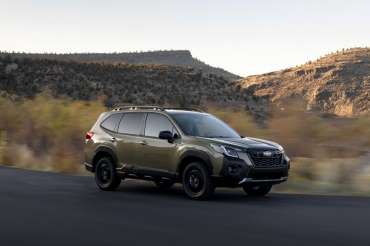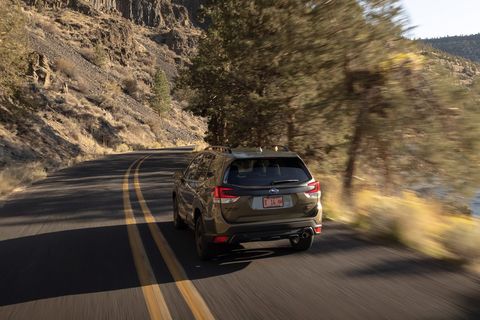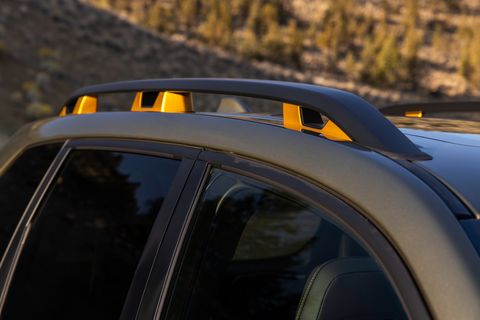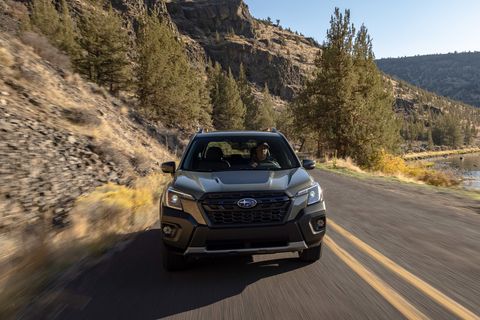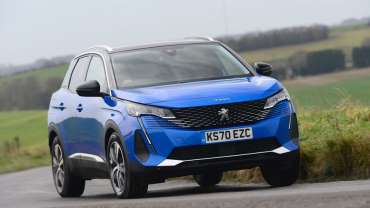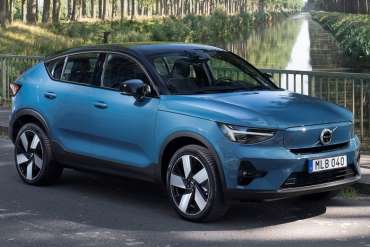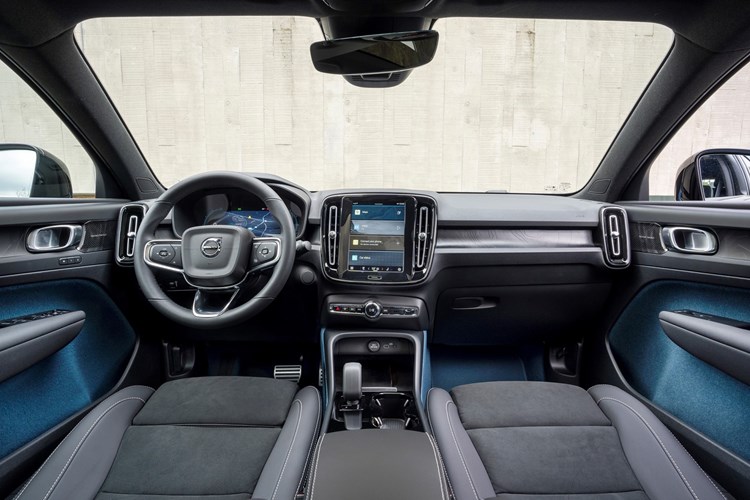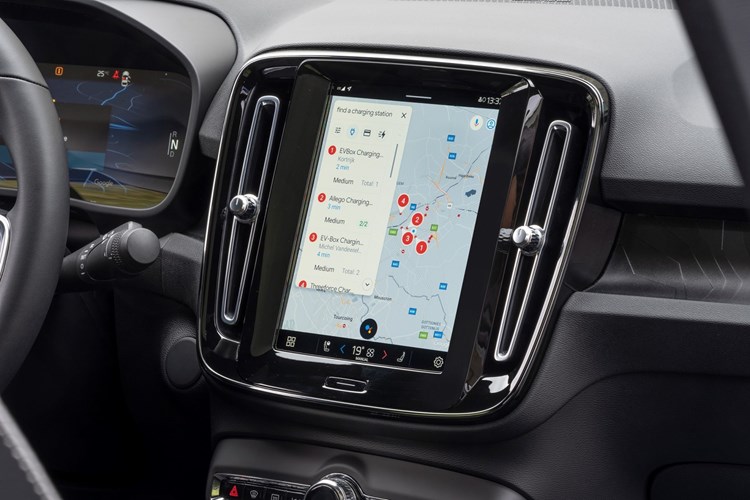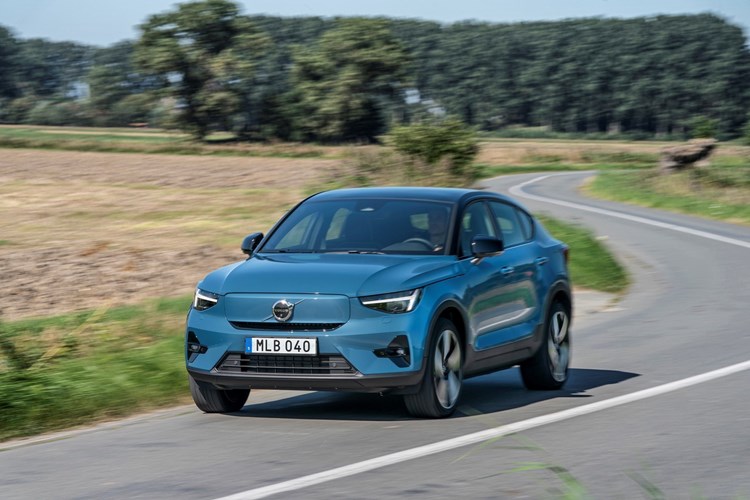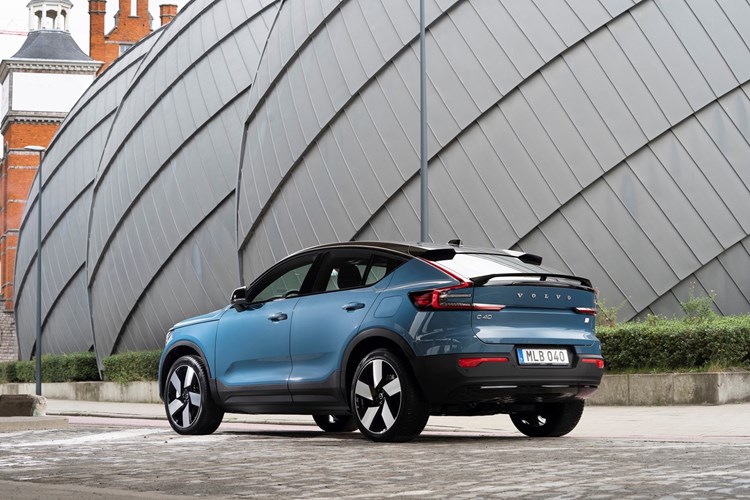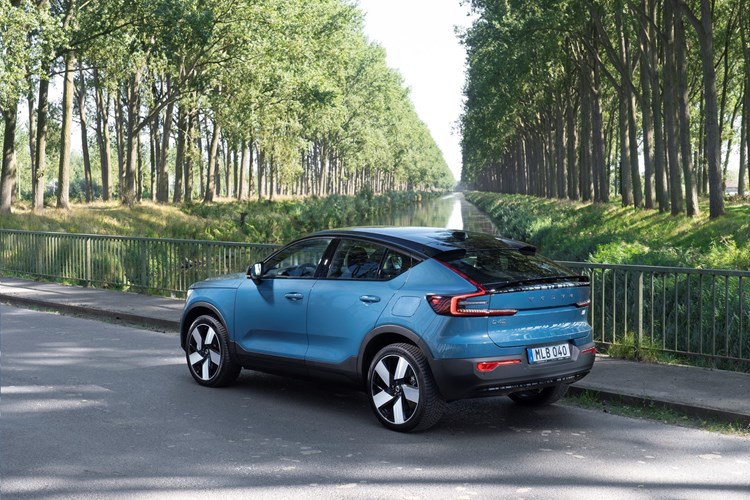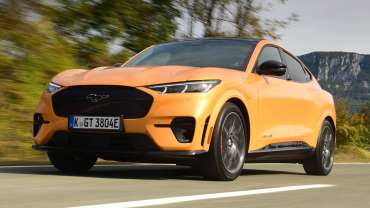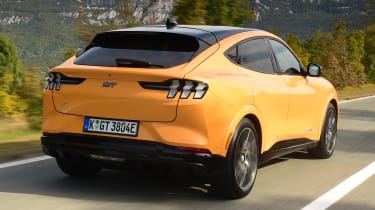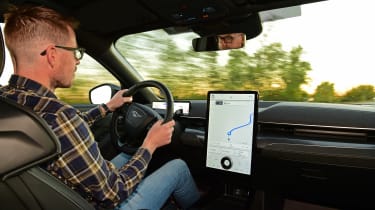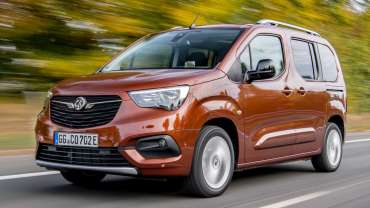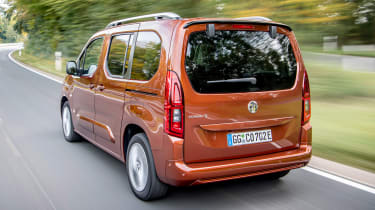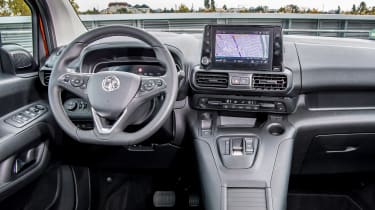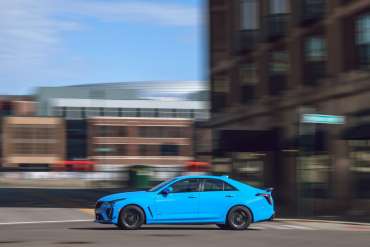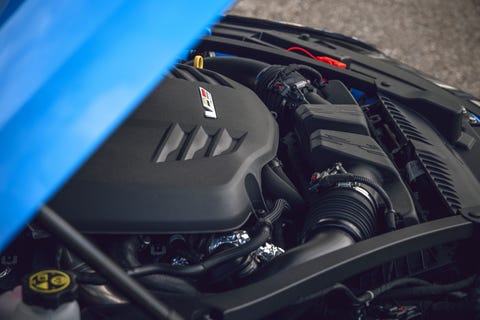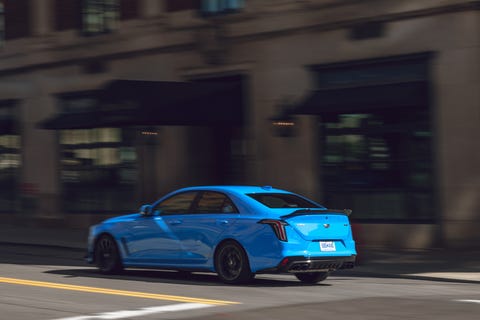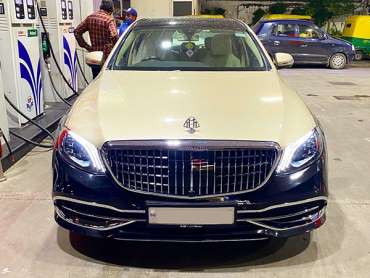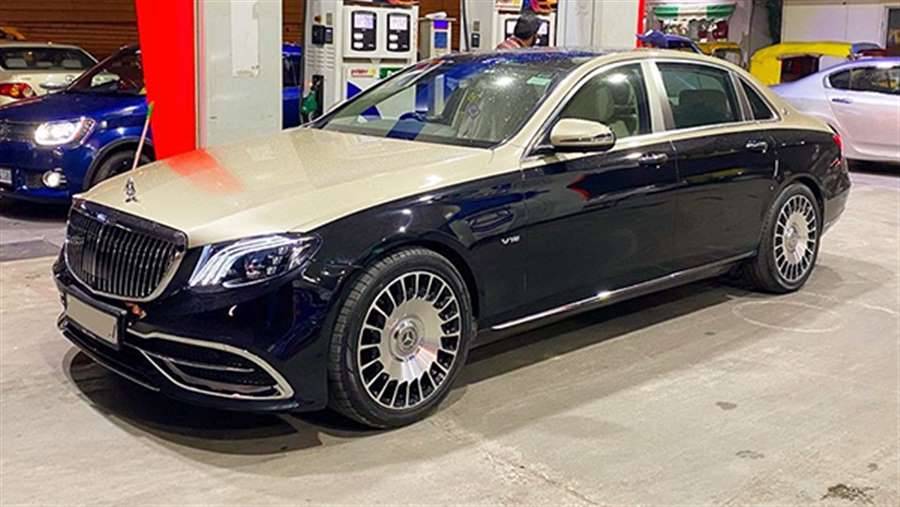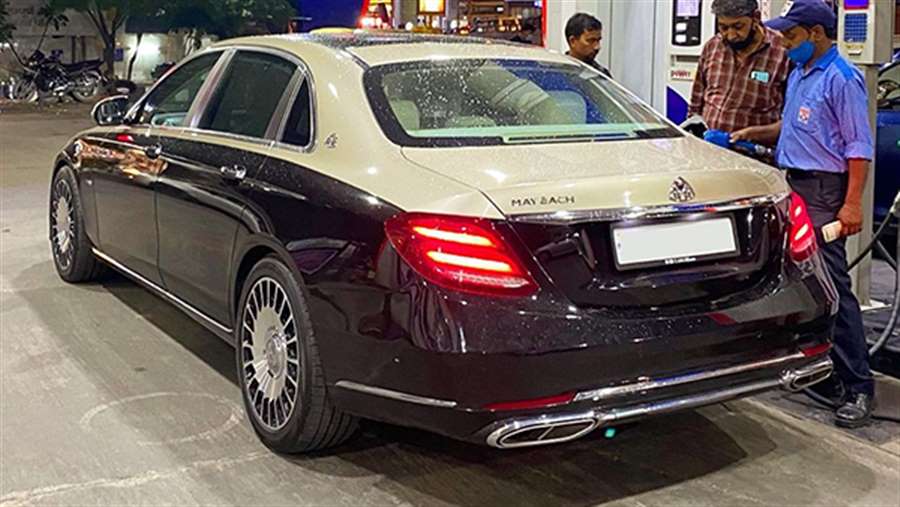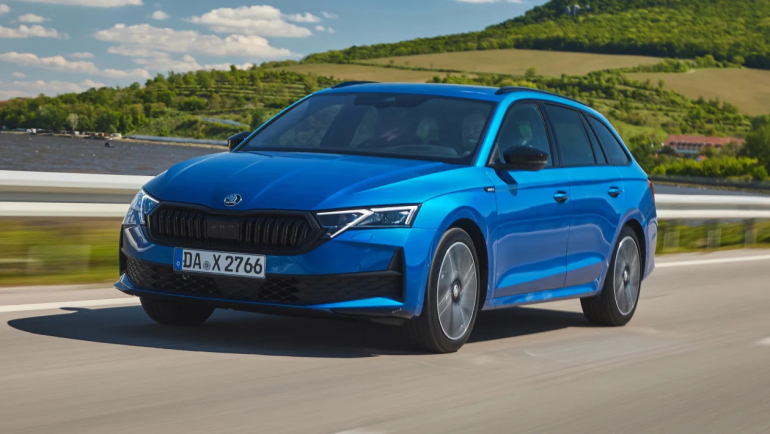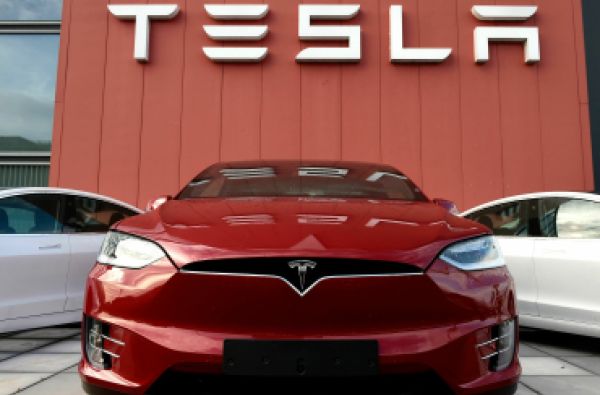"The Peugeot 308 is a comfortable, stylish family hatchback with a great interior but it’s not the most practical”
The Peugeot 308 is a family hatchback that’s had a complete makeover; its eye-catching looks are a big selling point but there are plenty of other reasons to consider buying one. The 308 is an alternative to the Ford Focus, SEAT Leon and Volkswagen Golf, and it shares parts with other similar models, including the Citroen C4 and the latest Vauxhall Astra.
There are petrol, diesel and plug-in hybrid engine options but there’s no choice of gearbox; the only option is an automatic, which means there’s no low-cost entry-level model to compete with basic versions of the Focus or Golf. It’s all part of a plan to make Peugeot into a more upmarket brand within Stellantis' wide range of brands, which is also the reason for the redesigned badge on the nose of the car.
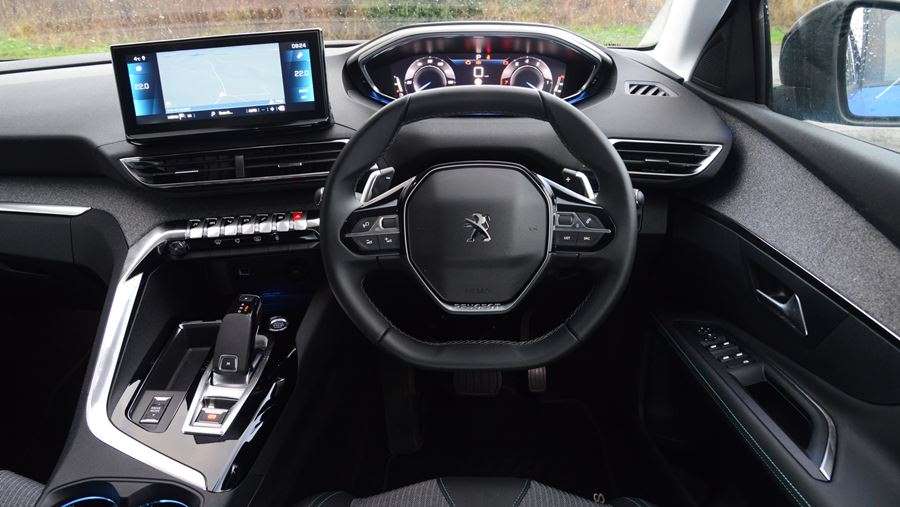
Best hatchbacks
The petrol version uses a 1.2-litre three-cylinder engine with 128bhp, while the diesel is a 1.5-litre four-cylinder unit with the same amount of power. The two plug-in hybrid options use the same 1.6-litre petrol engine, and have a total of 178bhp in standard guise, or 222bhp with an upgraded electric motor. These models offer low emissions and are cheap for company-car drivers to tax, plus they can travel up to 37 miles on electric power alone.
Most people will charge up the battery at home overnight at a standard rate of 3.8kW, but unlike some plug-in hybrids, the 308 is available with faster charging as an option. Equipped with a 7.4kW charger (for around £300), you can use a home wallbox or public charger to fill the battery in about two hours.
The new 308 is good to drive, striking a nice balance between handling and comfort. The Ford Focus is often considered to be the benchmark in the class for handling and the Skoda Octavia is the same for comfort. The 308 sits somewhere in between the two.
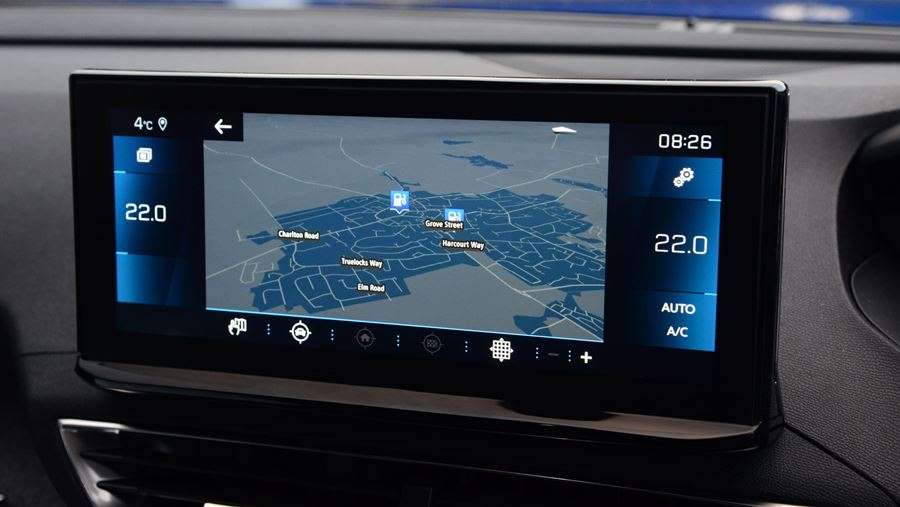
Yet one of the best aspects of the 308 is the interior. It feels well made and the materials are good quality, much like you’d find in a more expensive car like an Audi A3. There are some areas that look a little drab but its design is mostly excellent.
There’s also a 10-inch display with a second touch-sensitive panel below it. This looks very modern and is easier to use than the screens in other Peugeots (such as the 3008 SUV). It’s very responsive too, in a big improvement over the previous model.
The new 308 is available in Active Premium, Allure, Allure Premium, GT and GT Premium trim levels. All are well equipped; you get a 10-inch digital dial display, smartphone connectivity, LED headlights, climate control, 16-inch alloys and plenty of safety kit even on entry-level versions. As you move up the range, luxuries such as wireless phone charging, sat-nav, keyless entry, larger alloys and a 360-degree parking camera are added.
The 308 isn’t the most spacious family car around but it’s a great all-rounder that brings together comfort, efficiency, smart looks inside and out, enjoyable handling and plenty of hi-tech equipment. It’s not the best value for money but if you want an automatic or hybrid car, it’s well worth considering. There’s also a 308 SW estate version with more boot space, should you need it.
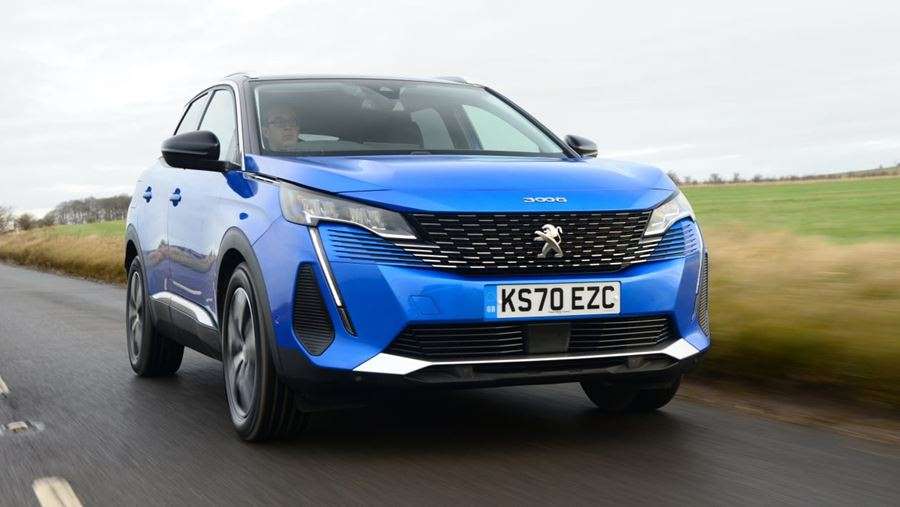
Peugeot 3008 SUV - MPG, running costs & CO2
Like many modern SUVs, the Peugeot 3008 is almost as cheap to run as a family hatchback
The Peugeot 3008 takes full advantage of the latest manufacturing techniques, using strong yet light steel, aluminium and plastics. This means it can be fitted with relatively small engines that offer excellent economy, catering to the thousands of buyers who covet an SUV but don’t want high running costs. It's a shame, though, that more electrified versions weren't introduced for the facelift, to plug the gap between the petrol and diesel 3008 and the plug-in hybrid.
The smaller 128bhp 1.5-litre diesel officially returns up to 60.8mpg and emits 122-157g/km of CO2. This is also available with an eight-speed automatic gearbox without affecting running costs too severely.
Going for a 2.0-litre diesel used to get you more power, but this has now been discontinued. The top-of-the-range 175bhp engine officially returned up to 47.3mpg and emits 162-178g/km of CO2.
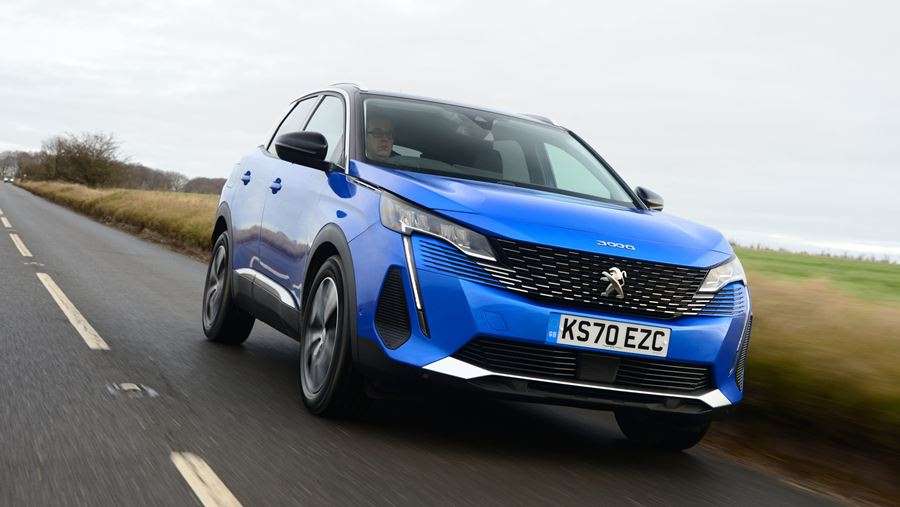
Despite traditional SUV trends, petrol power will be an economically viable option for many buyers, especially if most of your driving is done over short distances or in town, purely because you’ll pay less for an equivalent engine, and little more for its fuel. The entry-level 128bhp 1.2-litre returns up to 48mpg and emits 133-165g/km. The 1.6-litre petrol was discontinued in mid-2021 but officially managed around 43mpg with emissions of 148-177g/km of CO2.
Choosing Peugeot’s six-speed automatic gearbox costs around £1,300 and sees economy drop by just a little bit. CO2 emissions rise fractionally if you go for the automatic.
Officially, the most economical model is the range-topping 3008 Hybrid4, which is a direct rival to the Ford Kuga plug-in hybrid, and is said to return up to 235.4mpg. It’s worth pointing out that you’ll struggle to achieve close to this figure unless you religiously charge up the battery and only use the car for short, urban trips. CO2 emissions are remarkably low at 30-41g/km, which will please company-car drivers. The less powerful front-wheel-drive hybrid model is capable of up to 222.3mpg with CO2 emissions of 29-39g/km.
If you have access to a 7kW home charger, the Hybrid4 will fully replenish the battery in around one hour 45 minutes. You’ll need to wait eight hours for the battery to get to full charge if you’re using a standard three-pin socket. A dedicated smartphone app lets you choose when to charge the car (so you can charge overnight on a cheaper tariff, for example) and set the air-conditioning before you get in.
Company car drivers should find the Benefit-In-Kind (BiK) tax rates attractive, especially for the hybrid models. VED (road tax) for private buyers is charged at the standard rate for all petrol and diesel models with the hybrids liable for the discounted rate. Flagship models can cost over £40,000, and these will be subject to a surcharge until the car is six years old.
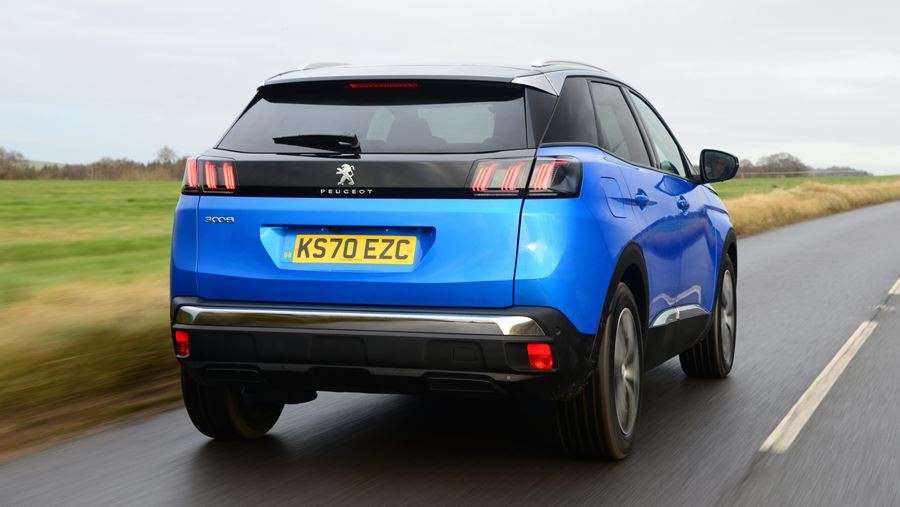
Insurance groups
The Peugeot 3008 sits in groups 20-38 for insurance. Most models are rated in group 21 and under though, with only the more powerful petrol and Hybrids punching above the group 22 mark.
Warranty
Peugeot’s three year/60,000-mile warranty used to be about average for the industry, but with Hyundai, Toyota, Kia, Mercedes and BMW also offering better protection, we’d argue it’s time for Peugeot to up its game here.
Servicing
Peugeot’s fixed-price servicing packages make budgeting for maintenance easy, and policies start from around £14 each month if you take out a three-year deal.
Peugeot 3008 SUV - Engines, drive & performance
The Peugeot 3008 is competent, comfortable and enjoyable to drive
What do you want your SUV to do? If the answer to that question is ‘be easy to drive while providing a high ride height for good visibility and access along with plenty of space for my family’, buy the Peugeot 3008.
If the first thing that sprang into your mind was ‘be great to drive’, you might think you’d be better off looking at the more expensive BMW X3 SUV, or a conventional hatchback like the SEAT Leon.
We've found the 3008 to be impressively composed on an open road, but it doesn't goad you to drive it harder. There’s little body lean to speak of, yet this doesn’t come at the expense of comfort, as the suspension makes a decent fist of softening pitted tarmac and soaking up potholes. The 3008 is also easy to drive around town, while it’s impressively quiet and civilised on the motorway.
The SEAT Ateca may have slightly sharper steering and stiffer suspension, but the trade off is it’s less comfortable than the 3008, which is well rounded in every aspect of its driving characteristics. It has the Nissan Qashqai and Renault Kadjar soundly beaten in the enjoyment stakes, coming off well in comparison to the sharp-handling Volkswagen Tiguan, while the Ford Kuga and Mazda CX-5 steer slightly more sweetly.
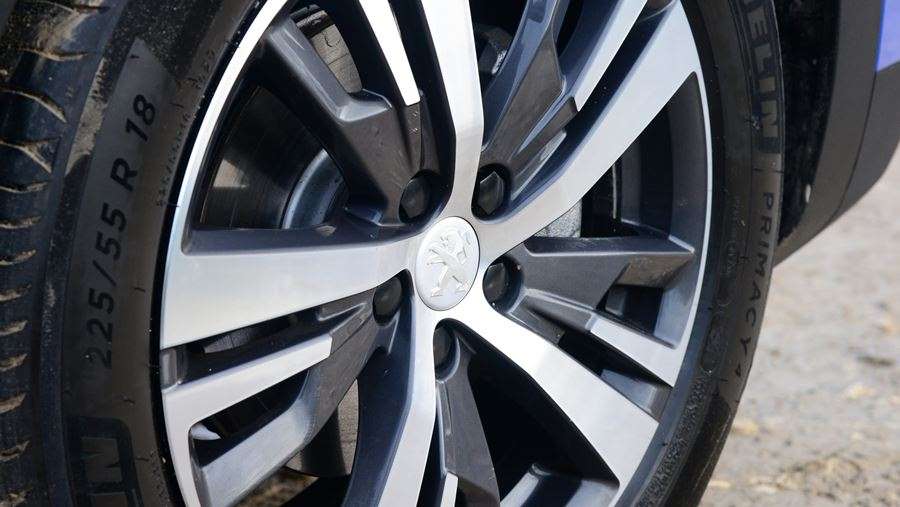
There’s no four-wheel-drive option for the non-hybrid 3008, but Peugeot’s ‘Grip Control’ setup (which is essentially a sophisticated traction-control system) costs between £250 and £500, as it requires 18-inch alloy wheels, which aren’t standard on all trims. It should help you out when the going gets tough, particularly if it’s paired with the optional winter tyres.
With an electric motor on each axle, the 296bhp Hybrid4 model has four-wheel drive and it’ll tackle reasonably challenging off-road terrain without needing to start the petrol engine. Both hybrids are much heavier than the petrol models and, while they offer great straight-line acceleration, the extra weight makes them feel much more cumbersome through corners.
Peugeot 3008 petrol engines
The 128bhp 1.2-litre petrol engine in the 3008 uses turbocharging to help keep performance up and running costs down, and they’re familiar Peugeot fare. Our drive of the more powerful of these revealed it to provide the 3008 with pretty swift performance, taking eight seconds to go from 0-62mph. The standard automatic gearbox that comes with this engine also impressed us, as it changes gear smoothly, quickly and with minimal fuss.
The petrol engine is also a smooth operator. This will probably need to be worked hard to shift the 3008’s heft, but it’s certainly worth taking for a test drive, as it offers the cheapest route to 3008 ownership. With this engine fitted, 0-62mph takes 9.5 seconds, although that time is likely to increase if you load the 3008 with passengers and luggage. It's impressively linear in its power delivery, and feels powerful enough for cruising on the motorway and overtaking slower traffic. In mid-2021, the range-topping 179bhp 1.6-litre petrol engine was discontinued. This unit was previously the quickest regular engine in the 3008 range, getting from 0-62mph in eight seconds.

Diesel engines
Many buyers after an SUV still want a diesel engine, so Peugeot offers one with either a manual or eight-speed automatic gearbox. Again, they’re staple Peugeot products, and we’ve driven the 128bhp 1.5-litre version, which is likely to be a big seller. It’s a little raucous when being revved, but once in a high-gear cruise it’s admirably quiet. It takes 10.8 seconds to go from 0-62mph, or 11.5 seconds if you choose the eight-speed automatic gearbox.
The 99bhp diesel is no longer available, and it was the only model to come with a five-speed rather than six-speed manual gearbox, with no automatic option. We'd recommend avoiding this engine if you're looking on the used market.
The more powerful 2.0-litre diesel engine was also discontinued with the arrival of the facelifted 3008. The 175bhp engine was automatic-only and had some extra grunt, which was useful for towing. However, it was only offered in the top trim with a hefty price tag. For that reason, it was a rare choice. This engine manages 0-62mph in 9 seconds.
Hybrid engines
Not every family car is offered with a plug-in hybrid version but Peugeot has offered 3008 buyers two to choose from. Both combine a 1.6-litre petrol engine with a 13.2kWh battery and an electric motor, and both use Peugeot’s eight-speed automatic transmission.
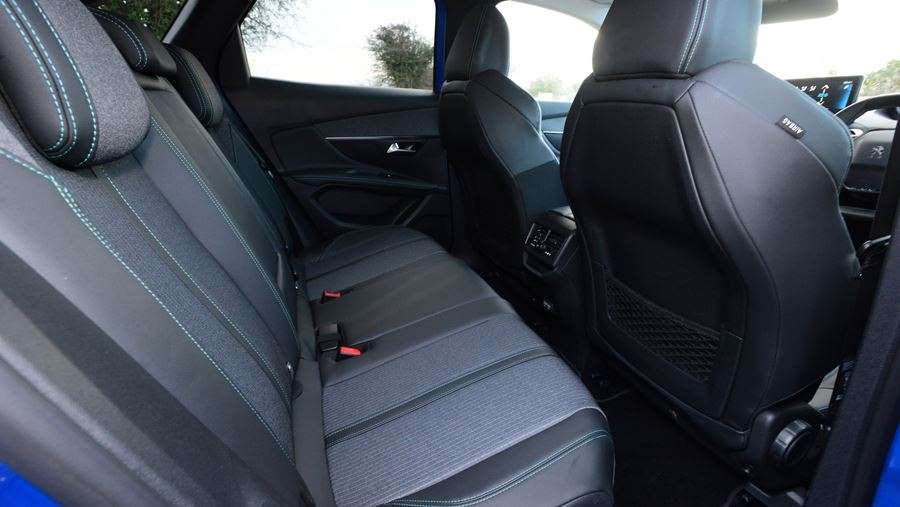
The front-wheel-drive ‘Hybrid’ is the less expensive and less powerful of the two, with one electric motor, 222bhp and a 0-62mph time of 8.9 seconds. Above that is the ‘Hybrid4’ with two electric motors (one on each axle), four-wheel drive and a peak power output of 296bhp. Zero to 62mph takes just 6.1 seconds - quicker than the Peugeot 308 GTi hot hatchback - although the Hybrid4 is expensive.
Peugeot 3008 SUV - Interior & comfort
The Peugeot 3008 has one of the best interiors we’ve come across in recent years
The Peugeot 3008 deserves to be heaped with praise for its interior design and represents the best in class. Peugeot is really spoiling us with the quality of interior materials, which range from excellent soft-touch plastics on top of the dashboard to attractively textured cloth running along the inside edge of the doors.
It’s also pleasing to report that while Peugeot fits the 3008 with a small steering wheel that’s designed to be looked over (rather than through) when viewing the dials, the ergonomics of this now look to have been resolved. Taller and shorter drivers who find the steering wheel obscures the gauges, shouldn’t have the same problem in the 3008.
Thanks to its great interior and ride quality, the 3008 is one of the most comfortable cars in its class.
Peugeot’s decision to fit all 3008s with its i-Cockpit is welcome and generous. This 12.3-inch digital display replaces the speedometer, fuel gauge and other dashboard dials and can be configured to show sat-nav guidance, media playlists or information about fuel economy and journey times. Audi has offered a similar setup for some time, but usually as a pricey option. Peugeot’s decision to make it standard may cause other carmakers to follow suit in an effort to keep up. For the facelift the screen has been upgraded for improved contrast, making it easier to read.
Another nice touch is the row of seven silvered toggle switches below the 10-inch infotainment touchscreen, which has grown for the updated car and now has improved definition. These look almost like piano keys and work in conjunction with the touchscreen, bringing up music, ventilation and other modes. You still have to use the screen itself to adjust the temperature and other settings, though, but the screen is capacitive rather than resistive, so it’s much easier to operate than some setups.
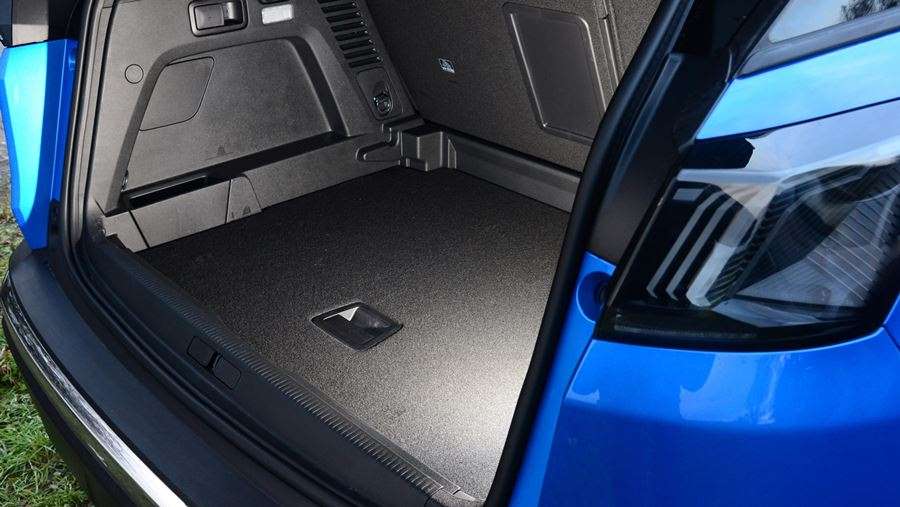
Equipment
The 3008 range kicks off with Active Premium, and choosing this gets you 17-inch alloy wheels, dual-zone climate control, all-round parking sensors, an eight-inch display, Apple CarPlay and Android Auto.
Moving up to Allure trim adds larger 18-inch alloy wheels and adds sat nav to a 10-inch infotainment system. Costing around £700 extra, Allure Premium brings keyless entry, aluminium roof rails, ambient lighting and a front passenger seat that can fold flat.
There's also a top GT trim with LED headlights, a black roof lining, adaptive cruise control and upholstery with a mixture of leather and Alcantara. This can be upgraded once more to GT Premium for the ultimate 3008 spec, bringing 19-inch wheels, a powered tailgate, enhanced stereo, 360-degree powertrain and heated seats.
Options
Just because the 3008 is well equipped, doesn’t mean there isn’t a fairly lengthy options list. Metallic paint is a near-essential for many and costs just over £500. We always recommend specifying a full-size spare wheel if possible, for which Peugeot asks around £100.
A wireless smartphone charging pad is available, along with Nappa leather upholstery and a panoramic sunroof.
Peugeot 3008 SUV - Practicality & boot space
The Peugeot 3008 is competitively spacious
The Peugeot 3008 is roomy enough for a family of four. The SEAT Ateca and Nissan Qashqai are ever so slightly bigger inside, but the 3008 has a larger boot than those two cars.
Peugeot 3008 interior space & storage
Front-seat passengers are able to stretch out in the 3008, but it’s not quite as commodious as its exterior dimensions might lead you to believe. Still, there’s an argument that many will like the sense of being cocooned in the 3008, especially given the plushness of its interior – and it’s by no means cramped up front.
Those in the rear do pretty well for space. The back doors open nice and wide, while head and legroom are good in the outer two seats. The front centre console extends a long way into the back, and we reckon middle-seat passengers may feel hard done by, as they’ll have to contort their limbs around a not-insignificant chunk of automotive furniture.
Boot space
At 520 litres, the Peugeot 3008 has the Nissan Qashqai (430 litres) roundly beaten when it comes to luggage space and even manages to edge the spacious SEAT Ateca by 10 litres for total load volume. Drop the rear seats using the levers in the boot and the boot grows to an impressive 1,482 litres. The 60:40 split-folding rear seats lie nice and flat, while the back of the front passenger seat can be folded for lugging longer loads.
Because of the space taken up by the batteries, the 3008 plug-in hybrid models aren’t quite so generous. With the seats up, there are 395 litres to fill, and this increases to 1,357 litres if you fold the rear seats. The Hybrid versions also get a 43-litre fuel tank, while regular petrol and diesel models have a tank that’s 10 litres larger.
Towing
If you plan on using the 3008 as a tow car, go for the 1.5-litre diesel, as this can haul up to 1,500kg. The other engines are rated at 1,200kg to 1,400kg, with the Hybrid versions able to tow up to 1,250kg.
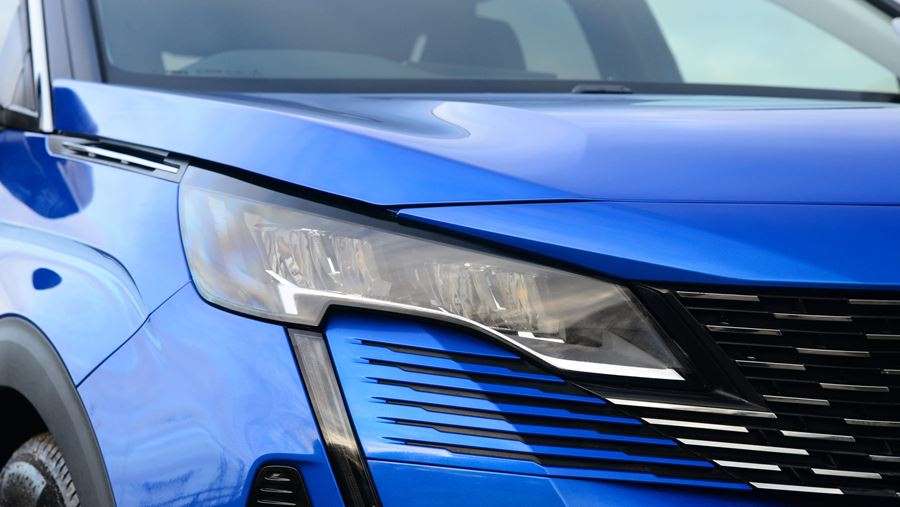
Peugeot 3008 SUV - Reliability & safety
Peugeot 3008 is very safe and scored highly in our Driver Power survey
The Peugeot 3008 achieved an impressive ranking in the 2021 Driver Power survey and scored well in Euro NCAP crash testing.
Modern car-building techniques mean a manufacturer or group of manufacturers can get more than one model out of a single platform – the mechanical skeleton that underpins the bodywork. The Peugeot 3008 is no exception to this trend, and it shares many hidden parts with the Citroen Grand C4 Picasso MPV, as well as the Peugeot 308 family hatchback.
After a mightily impressive second place out of 75 cars in our 2020 survey, the 3008 finished in 50th place in our 2021 Driver Power customer satisfaction survey. It still scored strongly in every category with a decent rating for reliability indicating how pleased 3008 owners are with the car as an ownership proposition, which is obviously encouraging if you're considering buying one.
Safety
Euro NCAP – the independent body that assesses the crashworthiness of new cars – toughened up its test criteria recently, so it’s good to see the Peugeot 3008 scored the full five stars when it was assessed. It scored 86% for the protection it affords adults and 85% for that offered to children. This is impressive, as many cars do an excellent job at safeguarding larger occupants, but post a lower result (often by as much as 10%) when it comes to smaller passengers.
All 3008s get mandatory kit like electronic stability control, ISOFIX child-seat mounts, a tyre-pressure warning system and a seatbelt reminder. Peugeot also throws in a clutch of airbags and a camera that scans for road signs, relaying pertinent information to a screen on the dashboard.
A lane-departure warning system also comes with all 3008s, as does autonomous emergency braking. This latter bit of kit is one of the biggest developments in car safety to have emerged in recent years, with data indicating it helps prevent up to 38% of rear-end crashes.
(https://www.carbuyer.co.uk/peugeot/3008/155079/peugeot-3008-suv-review-pictures)


